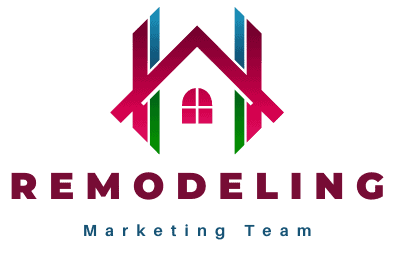Navigating strategic decisions in home remodeling profoundly influences client relations and profitability. One crucial choice impacting both areas is whether to provide free project estimates. While seemingly straightforward, this decision encompasses a variety of considerations that can shape a business’s operational effectiveness and its reputation in the competitive remodeling market.
Key Takeaways
- Strategic Advantage of Free Estimates: Offering free estimates can significantly enhance lead generation, build trust with potential clients, and provide a competitive edge by demonstrating transparency and commitment to customer service.
- Balancing Costs and Benefits: While free estimates can attract more prospects, they also involve costs that include time, labor, and potential material expenses. Contractors need to carefully manage these costs to ensure that offering free estimates remains a profitable strategy.
- Importance of Client Qualification: Implementing a qualification process can help contractors focus their resources on serious inquiries, thereby improving the efficiency of the free estimate strategy and reducing the risk of scope creep.
- Setting Clear Boundaries: Clearly communicating what is included in a free estimate and when charges might apply helps manage client expectations and protects the contractor’s interests.
- Technological Efficiency: Leveraging technology such as estimation software, digital takeoff tools, and construction management platforms can streamline the estimation process, increase accuracy, and reduce overhead costs.
- Legal and Compliance Considerations: Ensuring that all estimates comply with local regulations and maintaining thorough documentation are critical for legal protection and dispute resolution.
- Alternatives to Free Estimates: For larger or more complex projects, considering alternatives such as charging consultation fees or offering tiered estimating fees can provide flexibility and ensure compensation for extensive planning efforts.
The Business Case for Free Estimates
Offering free estimates is a common practice in the home remodeling industry, particularly for straightforward projects. This approach serves not just as a courtesy but as a strategic tool used by contractors to attract more clients. Industry surveys indicate that many homeowners prefer receiving multiple estimates before committing to a project, making the provision of free estimates crucial for being considered for a job.
- Lead Generation: The primary advantage of offering free estimates is the increase in potential client engagements. When contractors offer free estimates, they open doors to a broader client base, inviting interest from homeowners who are in the early stages of contractor selection. This is particularly effective in residential markets where homeowners are keen on comparing services and prices to ensure they are getting the best deal for their investment.
- Trust and Transparency: Providing free estimates helps contractors establish a foundation of trust. This transparency is often viewed favorably by potential clients, positioning the contractor as an honest and upfront business partner. Such an approach aids in building long-term relationships, crucial for sustainable business growth.
- Accurate Project Scoping: The free estimate process allows contractors to thoroughly assess project scope. This hands-on evaluation facilitates a more accurate understanding of project requirements, leading to better planning and budgeting, thus reducing the risks of cost overruns and client dissatisfaction. Moreover, it allows contractors to showcase their expertise and understanding of the project, which can be a deciding factor for many clients.
Challenges of Free Estimates
While the benefits are significant, the challenges of offering free estimates cannot be overlooked. These include potential increased overhead costs and the risk of engaging with clients who are shopping around without a serious intent to commit.
- Cost Implications: Providing free estimates involves direct costs related to time, labor, and sometimes even materials used in drafting preliminary plans. For small businesses, especially, these costs can add up, significantly affecting overall profitability.
- Scope Creep: Without a clear commitment from the client, scope creep can occur where the project parameters expand during the estimation process without corresponding adjustments in budget or timelines, leading to disputes and diminished margins.
- Lead Quality: The ease of obtaining free estimates can attract prospects who are less serious about immediate remodeling, thereby inflating lead volumes without proportionate conversion rates. This can lead to a high expenditure of time and resources on potential clients who do not convert into actual projects.
Strategic Implementation of Free Estimates
To mitigate the downsides while capitalizing on the advantages, remodeling businesses can adopt strategic approaches to offering free estimates.
- Qualifying Customers: Implementing a qualification process to determine which clients are offered free estimates can help focus resources on more promising leads. This might involve initial screenings or brief consultations to gauge project seriousness and client readiness. By ensuring that only serious inquiries receive free estimates, contractors can optimize their time and resources.
- Setting Boundaries: It is crucial for contractors to set boundaries on what a free estimate entails. Clear communication about the scope of the free estimate, and at what point charges may apply, helps manage client expectations and protects the contractor’s interests. This can include specifying the types of services included in the free estimate and any conditions or limitations that apply.
- Technological Enhancements: Utilizing technology such as estimation software can streamline the process, making it quicker and less costly. These tools provide accurate material and labor cost estimates that can be adjusted in real-time, offering a more dynamic interaction with potential clients. Moreover, integrating customer relationship management (CRM) systems can help manage and follow up with leads generated through free estimates effectively.
Alternatives to Free Estimates
For larger or more complex projects, alternatives to free estimates can be considered. These might include:
- Consultation Fees: Charging a nominal fee for in-depth consultations that go beyond a basic estimate. This fee can often be credited back to the client upon contract signing, serving as an incentive for project commitment. This approach not only compensates contractors for their time and expertise but also filters out less serious inquiries.
- Tiered Estimating Fees: Offering different levels of project estimation detail at varying price points. This approach allows clients to choose how much detail they want in their estimates based on their seriousness about the project and budget considerations. For instance, a basic estimate might be free, but a detailed estimate with complete material and labor breakdowns could come at a cost.
Best Practices for Managing Estimates
To maximize the effectiveness of free estimates, several best practices should be implemented:
- Detailed Documentation: Contractors must meticulously document all aspects of the estimate to maintain transparency and trust with clients, ensure legal protection, and facilitate clear communication. A well-documented estimate should include detailed breakdowns of labor, materials, and any contingencies. This helps prevent misunderstandings and provides a clear basis for negotiations.
- Price Range Communication: When project specifics may change, providing a price range rather than a fixed quote can help manage client expectations. This is particularly useful when dealing with uncertain site conditions or fluctuating material costs. Providing a range allows for flexibility and can prevent client dissatisfaction due to unexpected cost increases.
- Expert Advice Integration: Engaging with industry experts or using advanced cost estimation tools can enhance the accuracy of estimates. This supports financial planning for both the contractor and the client and helps avoid disputes and enhance time management. It also positions the contractor as a knowledgeable and reliable professional, further building trust with the client.
Technological Solutions for Estimation
In today’s digital age, leveraging technology can significantly improve the accuracy and efficiency of project estimates:
- Estimation Software: Tools like Buildertrend or Clear Estimates come equipped with pre-built databases of materials and real-time pricing updates, allowing for precise cost assessments. These tools enable contractors to quickly generate and adjust detailed estimates based on project changes. They also facilitate a smoother client interaction by providing visualizations and modifications in real time, which can be particularly convincing during client meetings.
- Digital Takeoff Tools: Software such as PlanSwift and Bluebeam Revu helps contractors measure and quantify materials directly from digital blueprints, reducing the chances of human error and speeding up the estimate process. This precision is crucial for maintaining budget accuracy and reducing waste during the construction phase.
- Construction Management Software: Platforms like CoConstruct or Procore integrate various aspects of project management, including budget tracking and subcontractor coordination. This software helps predict and manage potential cost overages, streamlining project execution. It provides a centralized platform for tracking all aspects of the project, enhancing overall project management efficiency.
Legal and Compliance Considerations
Adhering to legal and compliance requirements is critical when providing estimates:
- Regulatory Compliance: Contractors must ensure that their estimates comply with local laws and regulations. This includes providing all necessary disclosures and maintaining an adherence to fair trading practices. Understanding and adhering to these regulations not only protects the contractor from legal repercussions but also reassures the client of the contractor’s professionalism and compliance with industry standards.
- Protective Documentation: Keeping comprehensive records of all estimates and client communications can safeguard a contractor in the event of disputes. Proper documentation supports the contractor’s version of events and can be invaluable during legal proceedings. It acts as a definitive reference that can clarify intentions and details agreed upon during the estimate phase.
Conclusion
Offering free estimates presents both opportunities and challenges. While it can increase client engagement and build trust, it also requires careful management to ensure it remains a profitable practice. By implementing strategic practices, leveraging technology, and adhering to legal standards, contractors can effectively navigate the complexities of free estimates. These strategies not only improve operational efficiency but also enhance customer satisfaction and business reputation.
We encourage remodeling business owners to evaluate these insights and consider how they can be integrated into their business practices. For further discussion or to share your experiences with free estimates, feel free to contact us or leave a comment below. Let’s continue to refine our approaches and drive our industry forward together.
FAQs (Frequently Asked Questions)
What are the main benefits of offering free estimates in home remodeling?
Free estimates can attract more potential clients, build trust by demonstrating transparency, and allow contractors to accurately gauge the scope of a project, leading to better project planning and budgeting.
How can contractors manage the costs associated with providing free estimates?
Contractors can manage costs by implementing a qualification process to target serious prospects, using technology to streamline the estimation process, and setting clear boundaries on what the free estimate includes.
What technology can contractors use to improve the accuracy of their estimates?
Contractors can use estimation software with real-time pricing and material databases, digital takeoff tools for accurate material measurement, and construction management software to manage project costs and communications efficiently.
Why might a contractor choose to charge for estimates on certain projects?
Contractors might charge for estimates on larger or more complex projects that require significant time and resources to plan. Charging helps compensate for the detailed work involved in creating a comprehensive proposal.
How can contractors effectively communicate the scope of free estimates to clients?
Effective communication involves providing detailed documentation of what the free estimate covers, clarifying any conditions under which charges may apply, and ensuring the client understands the extent of the services being provided without charge.
What legal considerations should contractors be aware of when providing estimates?
Contractors should ensure their estimates comply with local and regional regulations, provide all necessary disclosures, and maintain thorough records for legal protection in case of disputes.
Are there any alternatives to providing free estimates?
Yes, alternatives include charging a nominal consultation fee that may be credited back upon project acquisition, or offering tiered estimating fees that provide varying levels of detail depending on the client’s commitment level.
What strategies can contractors use to ensure the profitability of offering free estimates?
Strategies include qualifying potential clients to ensure seriousness, using advanced technology to reduce time spent on estimates, and implementing best practices in documentation to streamline the estimation process.
This article is a collaboration between Carl Willis and OpenAI’s ChatGPT. Created on May 12, 2024, it combines AI-generated draft material with Willis’s expert revision and oversight, ensuring accuracy and relevance while addressing any AI limitations.






